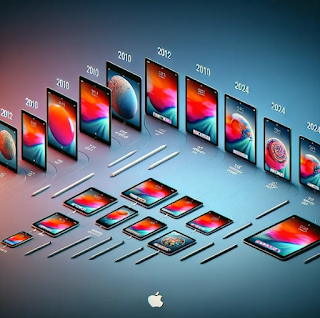In recent years, Apple's iPad lineup has evolved significantly, offering users a range of options tailored to diverse needs and preferences. With devices like the iPad Air and iPad Pro leading the charge, coupled with continuous advancements in iPadOS, Apple has solidified its position in the tablet market. This article explores the evolution of iPadOS, focusing on the iPad Air, iPad Pro, and the exciting developments shaping the future of Apple's tablet ecosystem.
Apple's iPad journey began over a decade ago, revolutionizing how we interact with technology. Initially positioned as a device for consumption and light productivity, the iPad has since grown into a versatile tool capable of handling complex tasks traditionally associated with laptops. Central to this evolution is the evolution of iPadOS, Apple's operating system tailored specifically for iPads. As we delve deeper into the specifics of iPad Air, iPad Pro, and the future of iPadOS, it becomes evident how Apple is pushing the boundaries of what a tablet can achieve.
iPad Air: Bridging Power and Affordability
The iPad Air occupies a crucial position in Apple's lineup, offering a balance of performance and affordability. With its sleek design and robust performance capabilities powered by the A-series chips, the iPad Air is a popular choice for users seeking a versatile tablet experience without the premium price tag of the iPad Pro. Key features such as support for the Apple Pencil and Magic Keyboard enhance productivity, making the iPad Air a compelling option for students, professionals, and creatives alike.
iPad Pro: Pushing the Limits of Performance and Innovation
At the forefront of Apple's tablet innovation lies the iPad Pro, a device designed to cater to power users and professionals demanding top-tier performance. Equipped with the formidable M1 chip, originally developed for Apple's Mac lineup, the iPad Pro delivers unparalleled processing power and graphics performance. The integration of advanced features like ProMotion technology, which enables a fluid 120Hz refresh rate, and the introduction of the Liquid Retina XDR display in the 12.9-inch model further underscores Apple's commitment to pushing the boundaries of display technology.
In terms of productivity, the iPad Pro's compatibility with accessories such as the Apple Pencil and the Magic Keyboard elevates its utility, transforming it into a versatile workstation capable of handling intensive tasks ranging from video editing to 3D rendering. Moreover, the advent of iPadOS 15 introduced enhancements tailored to the iPad Pro's capabilities, such as improved multitasking features and enhanced support for external displays, cementing its status as a viable alternative to traditional laptops for professionals on the go.
iPadOS: Unleashing the Potential
Central to the functionality of both the iPad Air and iPad Pro is iPadOS, a dedicated operating system optimized for the unique capabilities of Apple's tablets. From its inception, iPadOS has been crafted to leverage the iPad's touch-centric interface while introducing features that enhance productivity and creativity. With each iteration, Apple has introduced refinements that cater to the evolving needs of users, from the introduction of widgets and enhanced multitasking capabilities to robust file management tools and improved Apple Pencil integration.
Looking forward, Apple's commitment to advancing iPadOS underscores its dedication to empowering users with innovative tools and features that maximize the potential of iPad hardware. Future updates are expected to further blur the lines between tablets and traditional computers, offering seamless integration with Apple's ecosystem and enhancing cross-device functionality through features like Universal Control and enhanced Continuity.
The Future of iPadOS: Innovations on the Horizon
As Apple continues to innovate, the future of iPadOS holds promise for further enhancements that redefine the tablet experience. Rumors and leaks suggest that future iPad models may feature even more powerful processors, potentially paving the way for enhanced augmented reality experiences and advanced machine learning capabilities. Moreover, continued improvements in software optimization and integration with services like iCloud and Apple Arcade are poised to further enrich the user experience, ensuring that iPad remains at the forefront of innovation in the tablet market.
In conclusion, the evolution of iPadOS alongside devices like the iPad Air and iPad Pro exemplifies Apple's commitment to pushing the boundaries of what a tablet can achieve. From the versatility and affordability of the iPad Air to the cutting-edge performance and innovation of the iPad Pro, Apple continues to cater to a diverse range of users while maintaining a seamless user experience across its ecosystem. Looking ahead, the future of iPadOS promises continued advancements that will further solidify the iPad's position as a powerful and indispensable tool for productivity, creativity, and entertainment.
As Apple enthusiasts eagerly await the next chapter in the iPad's evolution, one thing remains clear: the best is yet to come.
This article explores the evolution of iPadOS, focusing on the iPad Air, iPad Pro, and the exciting developments shaping the future of Apple's tablet ecosystem


Post a Comment